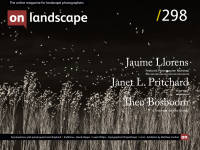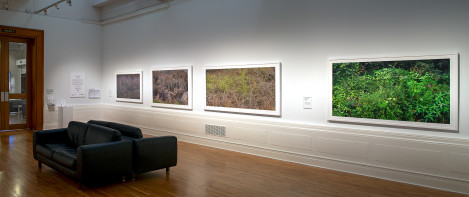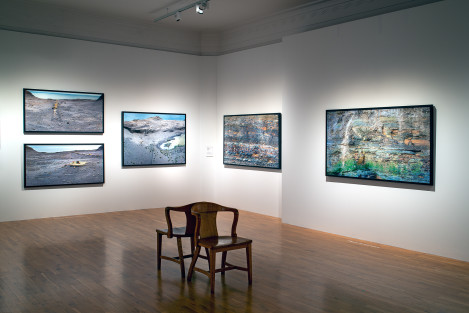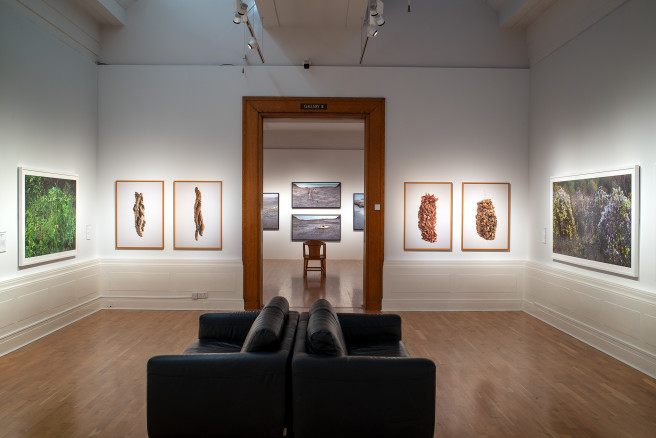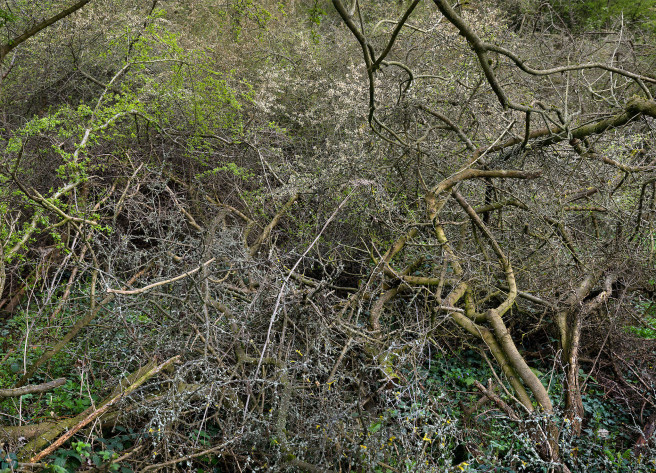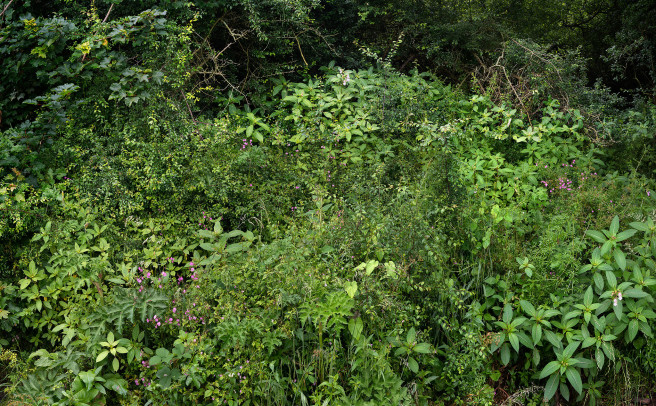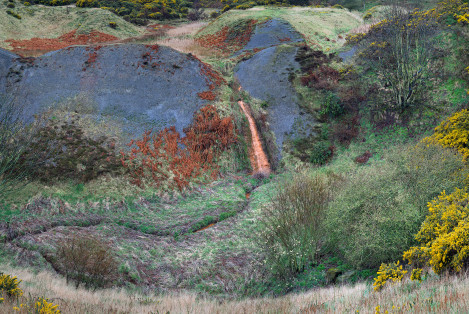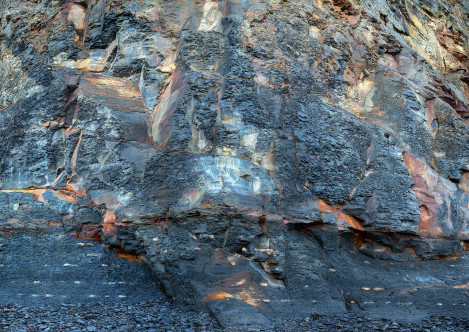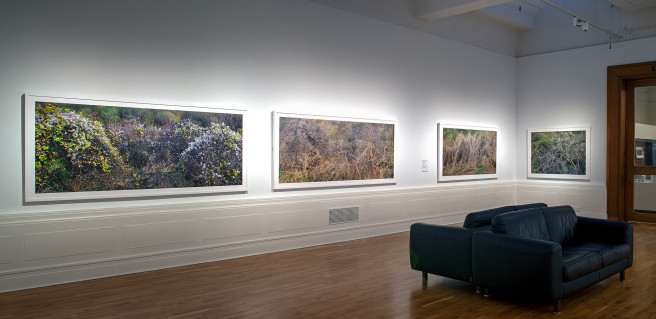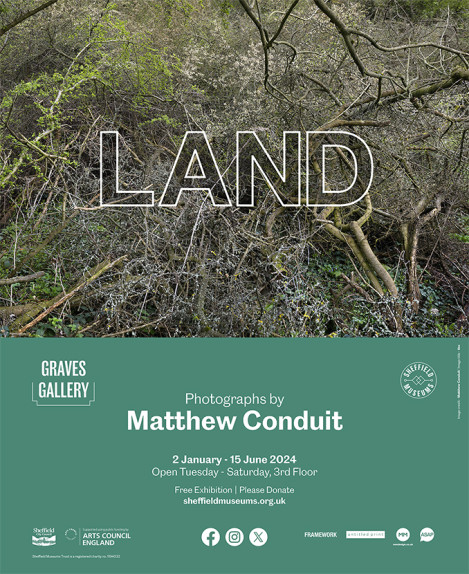An Exhibition by Matthew Conduit

Martin Hinchcliffe
Martin Hinchcliffe is Creative Director of MM Design. For 40 years he has been a practising painter, collector of 20th century British and American art and he has worked on and curated several art exhibitions including Freud, Minton and Ryan - Unholy Trinity at Bath’s Victoria Art Gallery and Falmouth Art Gallery; Received Dissent, an exhibition of William Copley’s SMS portfolios, shown for the first time in the UK and featuring works by many prominent artists including Roy Lichtenstein, Yoko Ono, Christo and Richard Hamilton. Recently, Martin worked on Tracey Holand’s Confluence Crossings & Guiding Lights at Hull and Grimsby Minters, and helped Matthew Conduit curate on ’The Sheffield Project - Photographs of a Changing City’ at Weston Park museum, Sheffield, before supporting him to curate his latest one person exhibition at Graves Gallery, Sheffield, LAND.
The Areas of Outstanding Natural Beauty and National Parks might be our destinations, and these are managed, georgic places, where much hard work and effort maintains an ecological balance. However, true pastoral is more likely to be found in the edgelands, where our slipstream has created a zone of inattention. Here, even plants and animals meant to live oceans apart are finding their point of balance in the overlooked landscape we flash by in the blink of an eye~'Edgelands, Journeys into England's True Wilderness'. Paul Farley & Michael Symmons Roberts. Jonathan Cape, 2011
Born in Nottingham, Matthew Conduit arrived in Sheffield in 1978 to study fine art at Sheffield City Polytechnic, and this city has remained his creative base and home.
Conduit has had a lifelong fascination with overlooked, marginal places. These are all once thriving industrial sites that have become an overlooked domain of self-seeding invasive plant species and the feral. They are also places of mystery and beauty that are, like his images, in continuous flux, shaped not only by time but by the social and economic environments that have determined their changing function and purpose.
For more than three decades, Conduit has revisited the same sites around Sheffield and continuously worked and reworked his images. In his beautiful large-scale prints, the high resolution and detail are fundamental to the expression of his ideas about aesthetics, place, context, and history, resulting in arresting images that slowly reveal their content.
The Land exhibition features a careful selection of photographs made from the last ten years, all never exhibited previously, and includes later work that explores the former Alum mining sites and cliff faces along Yorkshire’s east coast, the first time in many years he has left the city to make work. ‘Treasure’, still-life images that document found objects he has collected over the years whilst exploring the landscape is also featured for the first time.
Each of Conduit’s images serves as a visual narrative, weaving together the threads of his ongoing dialogue with forgotten places, inviting viewers to witness the transformation and rediscovery of these overlooked corners of the world.
Background
Matthew Conduit was born in Nottingham, and studied Fine Art at Mansfield College of Art and then Sheffield Polytechnic from 1978-1981. Staying in the city, he exhibited widely thereafter, including solo exhibitions at Impressions Gallery, York and at the Axiom Centre for The Arts, Cheltenham. He also featured in various group exhibitions, including the Collins Gallery, Glasgow, with Paul Hill, Keith Arnatt and John Davies, and The Photographers Gallery, London. He took a break from making work in the late 1980’s to concentrate on cultural building projects but resumed his photography in the early 2000’s, which culminated in an exhibition and book publication, ‘Chora’, at the Sheffield Institute of Arts in 2011, his first for 20 years.
Conduit was Director at the Untitled Gallery in Sheffield from the mid-1980s and relocated the gallery to its current location in the city in 1988 (now Site Gallery). He then worked for over 20 years developing the Cultural Industries Quarter and the Workstation/Showroom complex in Sheffield and as a freelance creative industries consultant working across the UK. Conduit has also worked with Heeley Trust since 2009 to develop Sum Studios in Sheffield, where his studio is based and where he continues to develop new work and operate the Untitled Print Studio.
Recently, Conduit curated ‘Regeneration - The Sheffield Project’, a major group exhibition at Weston Park Museum and accompanying publication reviewing the work commissioned and exhibited in the 1980s by the Untitled Gallery when he was Director, concerning the city and its regeneration up to the World Student Games. Artists featured included John Davies, Anna Fox, John Kippin, John Darwell and Bill Stephenson.
Working Process
Matthew Conduit’s images rely on a very high resolution to produce fine detail in his large-scale prints. Earlier work was produced on scanned 5x4 colour sheet film, but in recent years he has worked digitally. He scans a scene and takes many different images - in some cases, up to 80 images, which are then stitched together on a computer in the studio to complete the whole image. He then spends many hours retouching numerous twigs, branches and grasses that are often misaligned between frames. It is a long and difficult process, which can be interrupted by the light changing or a breeze moving the subject matter at any time. As a result, he only makes pictures in even, overcast light and on the stillest of days. The process also means that he never gets to see the completed picture until he is back in the studio.
Notes On Locations
Brightside
Brightside Recreation Ground and the site of Limpsfield School was formerly the site of Unwin and Shaw's coal pit, generally known as the Brightside Colliery, where nine miners lost their lives in separate accidents from 1865 to 1873. The coal seam was worked out, and the mine was completely closed by 1886.
Blackburn Meadows
Blackburn Meadows Nature Reserve is on the site of Sheffield’s main sewage treatment works, which opened in 1884. The nature reserve was developed in 1993 out of the redundant sludge beds that remained following the modernisation of the sewage works between 1956 and 1969 and was expanded further in 2005.
In 1942, Olympia Oil and Cake Company, based in Blackburn Meadows, was outsourced to produce 5,273,400 cakes by the Porton Down biology department. These were used in Operation Vegetarian, a British biowarfare military plan to disseminate linseed cakes infected with anthrax spores onto the fields of Germany.
Shire Brook Valley
Shire Brook Valley Nature Reserve was formerly the site of Coisley Hill Sewage Treatment Works, Rainbow and Carr Mills, Birley East and Birley West Coal Mines, and the Beighton Road Landfill site, under which the Shire Brook is now culverted. The area was also heavily farmed from the late 1700’s.
The Shire Brook was the historical boundary between Northumbria and Mercia and was the border of Yorkshire and Derbyshire up until boundary changes in 1967, when Sheffield expanded its boundary to include Hackenthorpe and Beighton.
Catcliffe Flash
A ‘flash’ is a body of water that forms where the land below it has subsided. Whilst these are mostly found in areas where mining has taken place, some can occur naturally. Collectively, they are known as Flashes. Catcliffe Flash was likely formed as the elevation of the land beside the River Rother dropped due to coal mining subsidence from neighbouring Orgreave Colliery, which was actively extracting coal for 170 years up to 2005.
Alum
Dating back centuries, alum was essential in the textile industry as a fixative for dyes. In the 15th century, Europe’s Alum production was controlled by the Catholic Church and ultimately by the Pope, and the vast sums of money from Alum exports in Europe went to the Vatican. Alum was discovered on the Yorkshire coast by landowner Thomas Chaloner and has been mined for up to 300 years.
Alum was extracted from quarried shale stone and then burnt in huge piles for nine months before being transferred to leaching pits to extract the aluminium sulphate liquor. Human urine was then added to turn the sulphate into ammonia aluminium sulphate. At its peak, alum production required 200 tonnes of urine every year and was imported from London, Sunderland and Newcastle.
The last Alum works on the Yorkshire Coast closed in Sandsend in 1871. Conduit is fascinated by this alien landscape, still scarred centuries later by the toxic process.
The Edge
Conduit became fascinated by the varying cliff faces along the East Coast many years ago but only started to photograph them around 2012. This was initially a largely aesthetic exercise, but he grew to consider them in terms of representing the very ‘edge’ of the landscape, where millennia of history unfolded. More recently, the signs of the impact of coastal erosion have taken on an additional significance. This work also led to the Alum series, which Conduit discovered while photographing The Edge.
Treasure
Treasure is an ongoing series of images made of objects collected while traipsing the landscape. The earliest object in the series dates from 1980. The images shown in the exhibition include two from the ‘Bark’ series, where Matthew collected large pieces of fallen bark from a dead English Oak tree, and ‘Leaf Stack’, where collected leaves have been threaded together and then hung in the studio, where they have dried out and coalesced. Matthew started photographing these objects from 2015 onwards.
Exhibition Details
Sheffield Museum, Graves Gallery,
(Above the Central Library), Surrey Street, Sheffield, S1 1XZ
From 2nd January to 14th June 2024
- Graves Gallery, Sheffield, January 2024

